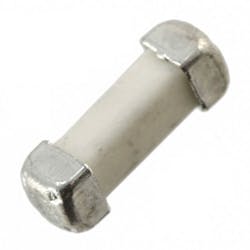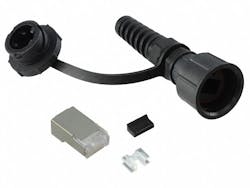Download this article in PDF format.
Everyone seemingly is talking about or working on some project related to the forthcoming 5G wireless systems. While some carriers have already rolled out limited service, numerous equipment makers are still creating products for this market. All of the interest seems to focus on the main components, such as modems and other exotic ICs, innovative antennas, and a variety of networking gear.
But what about all of those supporting parts that are needed to make base station, backhaul, and data-center products function reliably? Here’s a look at some of those essential products that often don’t get the respect they deserve.
Sponsored Resources:
- Brick SMT Fuse Portfolio
- SealJack™ Harsh Environment RJ45 Modular Jacks and Plugs
- 5G Application Supporting Connectors and Adapters
Traditional Protection Still Best
Whether you’re making power supplies or some telecom product with a backplane, some overcurrent protection must be incorporated. A short or other overload failure can shut down a whole segment of a 5G network. There’s still nothing better than a fuse to avert an unexpected meltdown.
Designing with fuses is relatively straightforward. One good practice is to use fuses in multiple places in the system. Protect each major section or subassembly separately rather than all of them as one. Then if a fuse blows, you can quickly determine the location of the failure while the rest of the system continues to work.
Telecom equipment typically consumes high power. Most of the equipment uses low voltages for the high-speed ICs, which translates to very high current consumption. Some high-current fuses are needed. Bel Fuse addresses that need with its SMM Series 3812 size surface-mount-device (SMD) fuses (Fig. 1). These unique square ceramic devices come in high current ratings of 20, 25, and 30 A with voltage ratings up to 250 V ac and 65 V dc. Their small size won’t hog the always limited PCB space in new products.
Another interesting fuse from Bel Fuse is its Brick SMP series. These surface-mount devices are made with a ceramic tube featuring brass end caps. Voltage ratings are up to 600 V ac and 125 V dc with current ratings up to 30 A. The fuses target all sorts of equipment needing short and overload protection, including power supplies, battery chargers, routers, Power over Ethernet (PoE) devices, and backplane-based equipment. These SMP fuses offer Lighting Surge Withstand and 600-V Power Cross Protection. The SMP line also has safety agency approvals for the U.S., Europe, Japan, and China.
RF Connectors for 5G
5G gear uses an abundance of connectors. The popular SMA type RF connector is a good example, but there are many other types. For instance, Cinch Connectivity Johnson makes a variety of connectors for most 5G applications. Also, highly desirable are the fixed-length RF cables with connectors. They save lots of time and effort and eliminate the frustration of making them yourself. Some of these connectors include:
- SMA: Operation to 26.5 GHz. Multiple materials models including brass, non-magnetic brass, and stainless steel. Quick-connect connector versions and a variety of adapters.
- SMP: RF performance to 40 GHz. A key feature is blind mate usage that accommodates both radial and axial misalignment. Proven reliability in extreme shock and vibration conditions.
- SMPM: Performance to 65 GHz because of its smaller size. Useful in radial and axial misalignment situations. Also good in high vibration and shock environments.
- 1.85-mm series: Stainless-steel material; good to 67 GHz.
- 2.4-mm series. Also stainless steel; operation up to 50 GHz.
- 2.92-mm (SMK) series: Functional to 40 GHz; meets MIL-STD-348.
- Multiple adapters for conversion from one connector size/type to another make application easier.
Protecting 5G and Networking Equipment in Harsh Environments
5G equipment is often installed in harsh environments with its high heat levels, dirt, and other potential failure-causing conditions. In addition to an extensive range of RF coax connectors, the one thing that really needs protection are networking connectors. Stewart Connector has developed solutions to address that situation.
The dominant networking technology used today, not only in the office but also in the factory, is Ethernet. Ethernet LANs use unshielded twisted-pair (UTP) cabling with RJ-45 connectors. The standard RJ-45 connector was not designed for hazardous locations. The solution is Stewart Connector’s SealJack Harsh Environment RJ45 Modular Jacks and Plugs. These cables are designed to meet industrial standard IP67. The plugs are fully covered to withstand moisture, dirt, and other possible industrial materials (Fig. 2).
Stewart makes matching RJ-45 jacks as well. These are also fully shielded and fully compatible with most Ethernet versions such as 10/100Base-T, 1Gbase-T, and the newer 2.5GBase-T and 5GBase-T.
Stewart’s SealJack portfolio is well-suited for equipment being designed to support harsh-environment applications. While Ethernet is dominant, Stewart also offers sealed and protected USB 2.0 jacks.
Sponsored Resources:
- Brick SMT Fuse Portfolio
- SealJack™ Harsh Environment RJ45 Modular Jacks and Plugs
- 5G Application Supporting Connectors and Adapters
Related Resource


